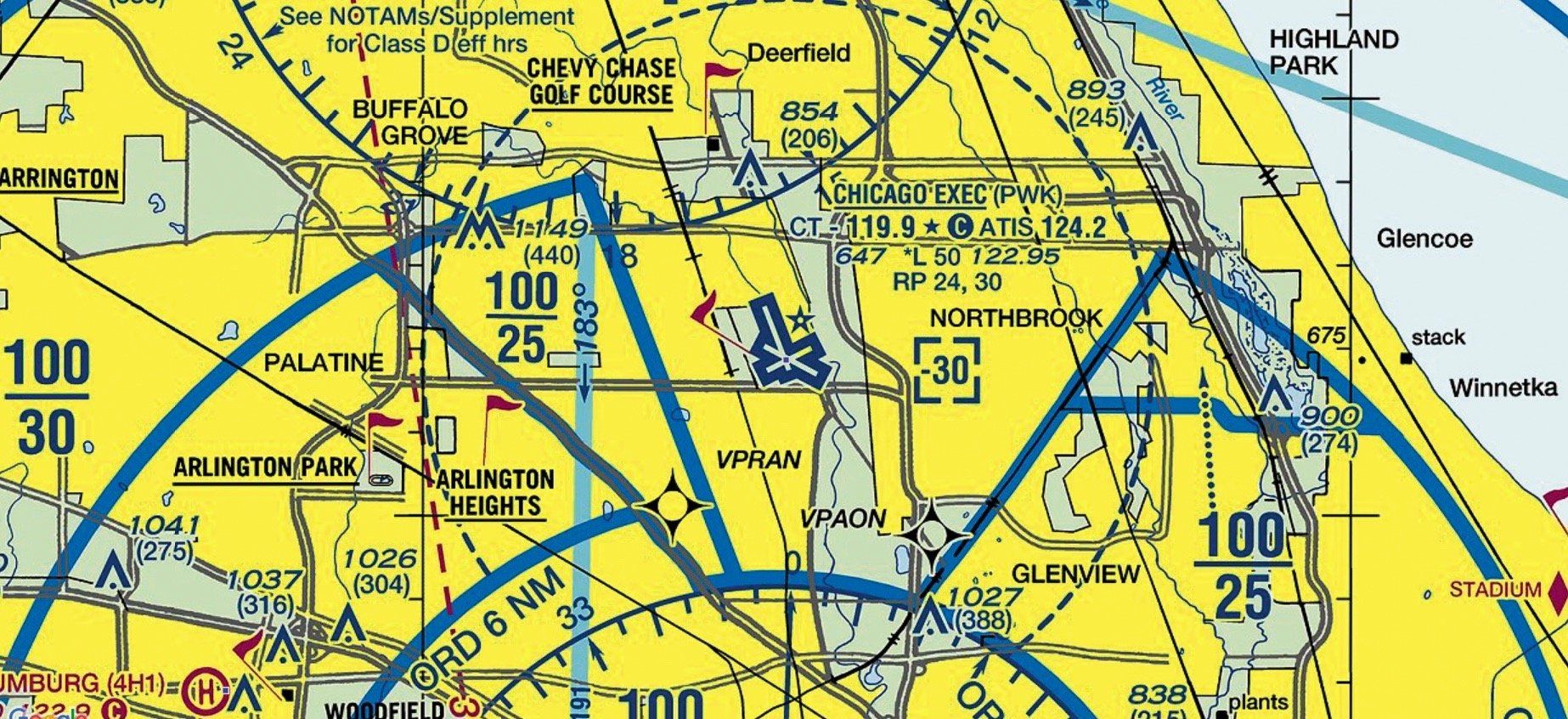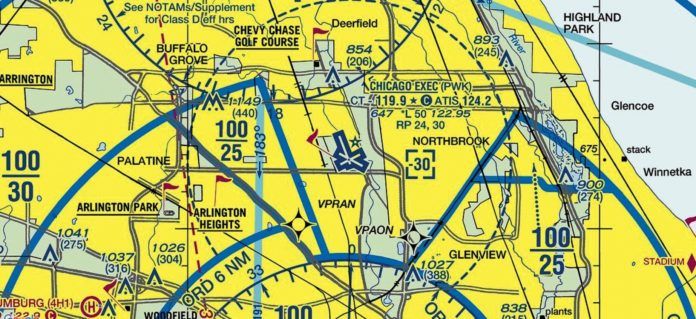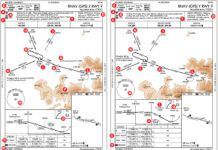The FAA currently supports both ground- and satellite-based instrument approach procedures (IAP) totaling over 12,000 approaches—roughly double the number from 10 years ago. That many approaches are costly and require excessive resources to maintain.
To reduce costs in transitioning to NextGen, the FAA quickly targeted many instrument flight procedures as low-hanging fruit. This requires a delicate balancing act because continuity of National Airspace System (NAS) safety must be maintained. Let’s look at policies the FAA adopted when considering whether to cancel an IAP.
IAP Cancellation Criteria
Utilization is not a standalone reason for canceling an approach. The FAA found that usage data could be inaccurate or even unavailable. By itself utilization does not reflect the real value of an IAP. For example, practice approaches do not count as usage, but have definite value.
Special operating conditions, such as those in Alaska, may demand criteria that differ from those applicable to “the lower 48.”
Reducing the number of IAPs is just one of four efforts to reduce the total number of procedures. These include the VOR Minimum Operating Network (MON) for use in case of GPS issues; the Performance Based Navigation Strategy to expand PBN; and an FAA group called the Regional Airspace Procedures Team.
The team includes members from Air Traffic, Aviation System Standards, Flight Standards, and Airports. The team evaluates customer requests that might affect airspace, airports, or flight procedures. Efforts to reduce procedures must be coordinated across all these parties.
Airways are excluded from the evaluation process. Wisely, the FAA noted that in evaluating any procedure, ATC personnel should be involved.
Circling Reduction
Short of canceling entire procedures, elimination of circling minimums, now numbering 11,792—about a third of all lines of minimums—also helps right-size the NAS. Last October, the FAA published a proposed policy and request for comment that spelled out criteria to guide them in selecting circling procedures for possible cancellation. The FAA proposed to apply these criteria during the normal approach review process every two years.
After review of all submitted comments, the FAA published the final policy effective July 30. We’re going to present and explain them, show how they are applied to some specific approaches and how you can comment if you wish.
The Policy Statement
Based on comments received, the FAA finalized its policy regarding the assessment of circling procedures during the existing periodic IAP review process.
If the circling approach is the only IAP at the airport, it will remain. Similarly, if the procedure is at a designated MON airport, it will not be canceled.
If multiple IAPs serve a single runway end, and a ground-based procedure provides the lowest circling minimum to that runway, that procedure will be retained. However, if the RNAV circling minimum is within 50 feet of the lowest minimum, the RNAV will take precedence.
They won’t cancel circling minimums for the last or only conventional (ground-based) approach procedure at the airport. If circling minimums exist for multiple ground-based procedures, the FAA’s preference will be to retain ILS circling minimums.
The FAA’s plan assures an airport within 20 NM with circling minimums. This provision recognizes the need to retain circling capability as part of the Instrument Rating checkride and the Instrument Proficiency Check.
A procedure will remain if its removal would eliminate the lowest landing minimums to a runway.
Many circling-only procedures exist due to high terrain or obstacles on a straight-in approach. If cancellation would make straight-in minimums higher than the circling mins, the procedure would remain.
If a circling-only procedure exists at an airport where not all runway ends have a straight-in IAP, and it has a final approach course greater than 45 degrees from the runway with a straight-in IAP, the procedure will remain.
Commenters Speak Up
One commenter expressed approval of the cancellation of a circling procedure only if all runways accessible by the procedure have a straight-in IAP with lower minimums than in the canceled procedure. The FAA replied that its policy is not meant to assure straight-in IAPs for every runway end, but rather to minimize redundancy. While cancelling some circling procedures might reduce airport accessibility, runway availability will be unaffected. You might have to fly further to get access to your approach, but its availability will stay the same.

The VOR-A at Moton Field
One respondent said the proposed policy does not account for pilot convenience and efficiency, citing the VOR-A at Moton Field Municipal Airport (06A) in Tuskegee, Alabama. The FAA cited the approach as a good example of procedure redundancy, pointing out that 06A has RNAV approaches to Runways 13 and 31, and with lower minimums. The irony is that the VOR-A is not a candidate, because it is the airport’s only conventional approach with circling minimums.
Another individual expressed concern about circle-to-land maneuvers being unsafe. The FAA countered that circling is often the safest solution. Unique situations and conditions could call for a circling approach, and design criteria reflect those situations. Hence advocating wholesale annihilation of circling is impractical. The FAA stressed, “Both circling maneuvers and straight-in maneuvers are evaluated using the same criteria and one is not safer than the other is.”
The FAA did acknowledge that while circling maneuvers may involve unique requirements for aviators and ATC specialists, they are addressed during training and so are not considered dangerous.
Better Access
One commenter requested adding two criteria to assure that the FAA maintains or improves airport access, saying that “access to a candidate location should never be reduced in the interest of process efficiency.”
The first request was to add an RNAV procedure to a runway to provide direct access instead of a circling approach. This was a hollow request because the FAA has been doing that for some time. Adding RNAV approaches has greatly improved access at many airports. Those additions, say the FAA, “significantly offset and frequently outweigh claims of circling procedure cancellations resulting in reduced access to airports.”
The second request was that if both RNAV and ground-based approaches are available, the ground-based approach should be retained against GPS outages. Apparently, the requestor was unaware that since 2011 the FAA has been planning a Minimum Operational Network enabling pilots to navigate conventionally to a non-GPS approach, preferably an ILS or LOC, within 100 NM within the continental U.S. from any altitude above 5000 feet AGL. None would require ADF, DME, radar or GPS. The MON makes retaining a ground-based approach at every airport unnecessary.
Chicago Executive (KPWK)
A pilot wrote to request consideration for high volume airports when considering cancellation of circling procedures. He cited the example of the ILS or LOC RWY 16 to circle to land on Runway 34 at Chicago Executive Airport (KPWK) and its proximity to Chicago O’Hare (KORD) as his example.
The FAA has this covered, too. The ILS 16 would retain its circling minimums because the policy prefers retaining ILS circling minimums. They could eliminate circling for the VOR RWY 16. However, The Flight Procedures Team could keep it if they find it necessary.
Find Out More
IAPs or circling maneuvers listed for cancellation can be found by searching the web for “IFP Information Gateway.” Comments on procedures listed on the Gateway (above) can be submitted before the comment deadline via e-mail to:[email protected].
Aeronautical Information Services will respond to each comment within 30 days of receipt. If the FAA decides to cancel a procedure or just circling minimums, the cancellation will be published in the Federal Register as usual.
Circling Safety
Though an economy measure, circling reduction is also indirectly a safety improvement since circling is so dangerous. The greatest flaw in the FAA document on circling reduction is that they opine twice that a circling approach is as safe as a straight-in approach. This is patently untrue.
IFR pilots know that circle-to-land approaches are the highest-risk maneuver we fly. They increase risk significantly compared to approaches that provide lateral and vertical guidance.
Both ICAO and Flight Safety Foundation studies demonstrate that a simple runway-aligned approach, say an LNAV, is 25 times safer in avoiding a CFIT accident than a circling approach.
The ICAO says that if vertical guidance is available as well, the safety margin is increased again by a factor of eight. Put another way: flying an approach with vertical guidance is 200 times safer than flying a circling approach. Hence every circling maneuver the FAA eliminates could improve safety.
Fred Simonds is a CFII in south Florida, and no fan of circling maneuvers. See his web page atwww.fredonflying.com.






Author Simonds is my all-time favorite aviation writer!
Yup, great for lower 48
Sucks for Alaska
We’re getting screwed up here